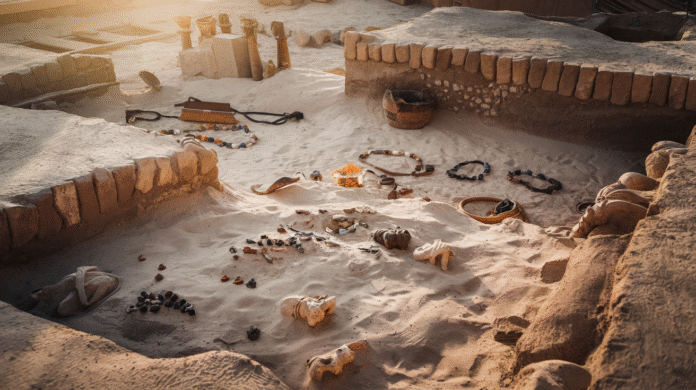The Egyptian-Roman animal cemetery in Berenice uncovers intriguing insights into the existence of pets in the ancient world, revealing a profound societal transformation.
The discovery of an ancient animal cemetery in Berenice, Egypt, has unveiled a striking social phenomenon. This particular site, dating back to the Egyptian-Roman era, was not intended for the grandeur of pharaohs or nobility. Instead, it served as the final resting place for beloved household pets. The graves, filled with the remains of dogs, monkeys, and even cats, provide a unique window into the past, shedding light on the deep emotional bonds between humans and their pets, a relationship that has shaped societies for centuries.
The importance of this discovery cannot be overstated. It provides a rich context for understanding the evolution of human-animal relationships. The pets were not merely discarded after death; they were carefully buried, some with collars, others placed in specially crafted pottery, indicating a level of care and respect that speaks volumes about their status in society. This evidence suggests that pets were considered part of the family, a sentiment that resonates with many pet owners today.
Unearthing Societal Bonds: A Deeper Look into Pet Burials
The main revelation from this archaeological find is the profound societal issues it brings to light. The burial of pets in a dedicated cemetery suggests that these animals held a significant place in the hearts and homes of their human companions. Their value extended beyond practical uses such as hunting or guarding; they were cherished for their companionship, a trait that remains a cornerstone of pet ownership today.
The actors in this narrative are the pets themselves and their human families. The careful burial of these animals indicates a deep emotional bond, a connection that transcends time and culture. The collars found on some of the remains suggest that these pets were not merely tolerated but actively cared for.
Data from the site further illuminates this phenomenon. The variety of animals buried, including dogs, monkeys, and cats, indicates a diverse range of pets, each likely serving a unique role within the household. This diversity mirrors that of modern pet ownership, further highlighting the enduring nature of this social phenomenon.
Legacy of Love: The Social Impact of Ancient Pet Ownership
The ancient pet cemetery in Berenice has profound implications for our understanding of societal changes. The concrete changes brought about by pet ownership are evident in the evolution of human-animal relationships. Pets were no longer seen as mere possessions or tools but as companions deserving of love and respect.
Different groups within society would have been affected by this shift. The elite, who could afford to keep pets for companionship rather than utility, likely led this change. However, the phenomenon would have eventually permeated all levels of society, influencing how people viewed and interacted with animals.
Looking forward, we can expect this trend to continue. As societies evolve, so too will our relationships with our pets. The discovery in Berenice offers a fascinating glimpse into the past, but it also serves as a reminder of the enduring bond between humans and their animal companions.
Evolution of Affection: Perspectives on Future Human-Animal Relationships
The Berenice pet cemetery marks an important social milestone in our understanding of human-animal relationships. The respect and care shown to these ancient pets underscores the deep emotional bonds that can form between humans and animals, a connection that continues to shape societies today.
Citizens can learn from this ancient practice, using it to inform their actions towards animals. The respect shown to these pets in death serves as a powerful reminder of the value of all life, encouraging a more compassionate approach to animal welfare.
Reflecting on the future, it’s clear that our relationships with pets will continue to evolve. As we gain a deeper understanding of animals and their needs, we can expect to see a continued emphasis on their welfare and rights. The ancient pet cemetery in Berenice serves as a testament to the enduring bond between humans and pets, a bond that will undoubtedly continue to shape societies for centuries to come.


